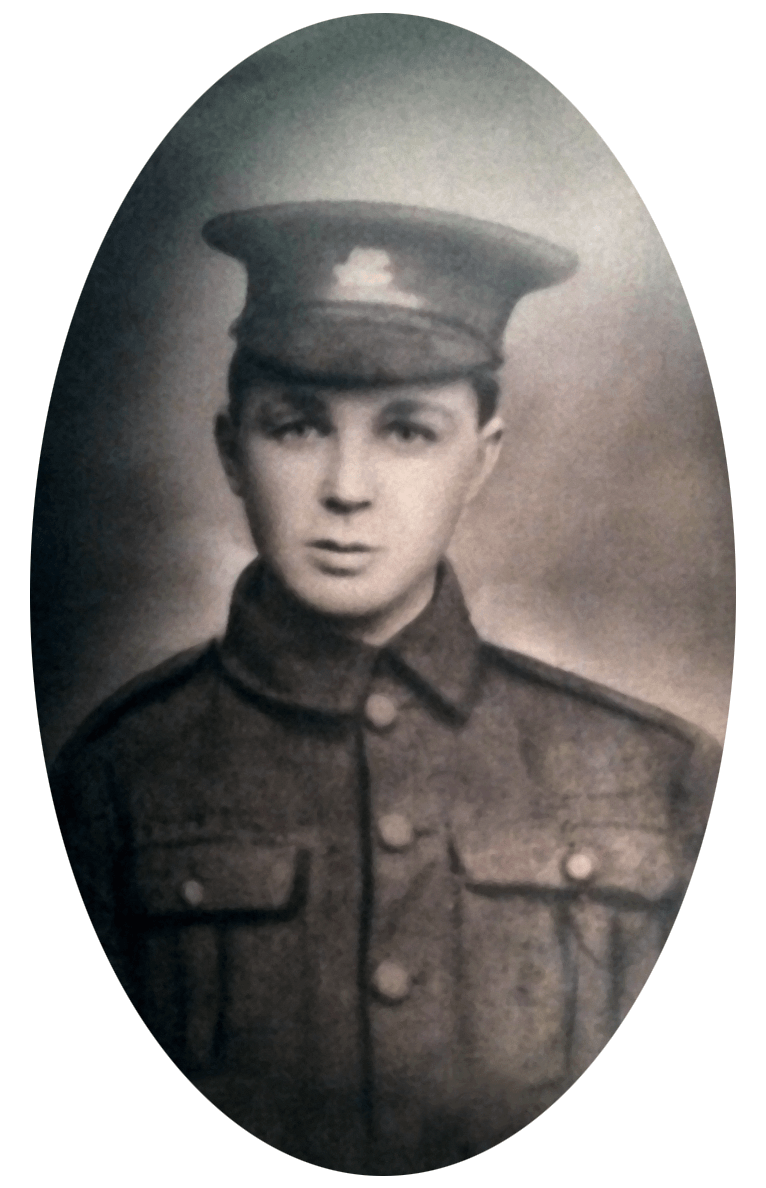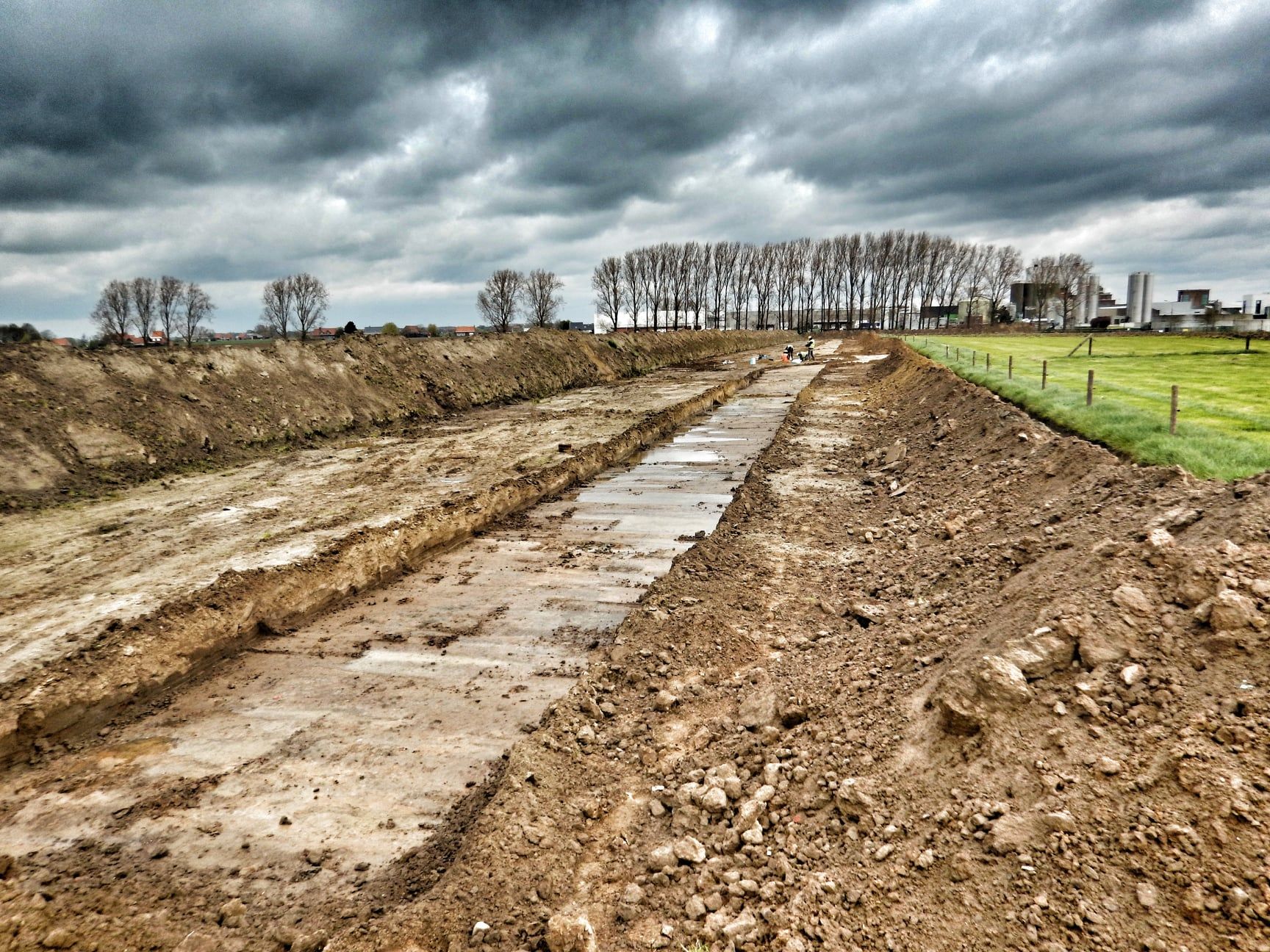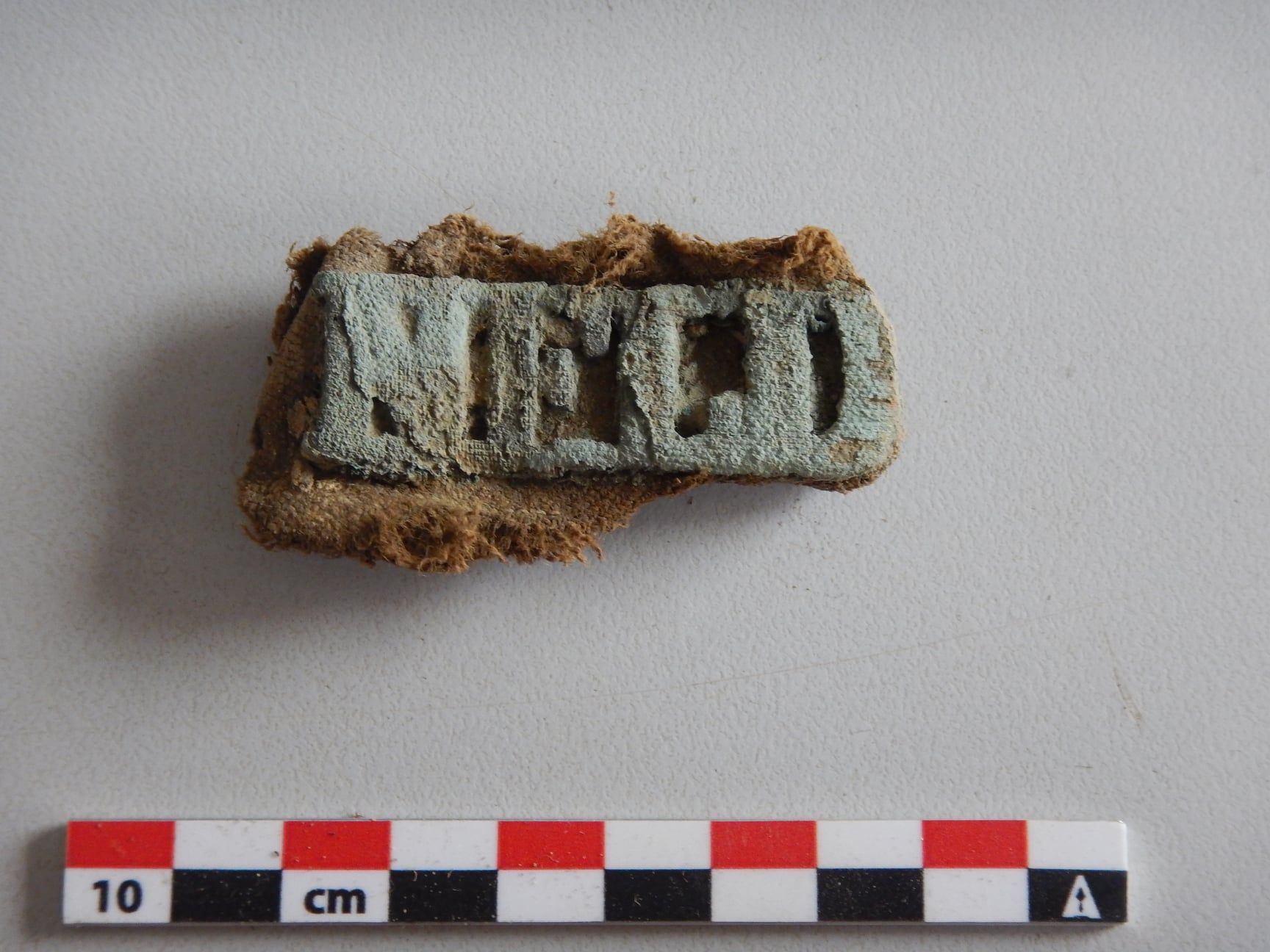In Memoriam:
Private John Lambert,
1st The Newfoundland Regiment,
10/7/1900 (St-John’s, Newfoundland) - 16/8/1917 (Langemark, Belgium)
In the early morning of 16 August 1917, the Medical Officer of the 2nd Royal Hampshire Regiment sent a message to the officer who was to organise the evacuation of the wounded. The Field Ambulance stretcher-bearers who were to collect the wounded at his Regimental Aid Post near Taffs Farm (Melkerijstraat, Langemark) did not show up and his medical post gradually became saturated. Pending a response, and on his own initiative, he used German prisoners to bring back the first wounded. However, it would take until the afternoon before everything was back to normal. Additional stretcher-bearers were sent to the medical posts near the farm. It was not until around 4 p.m. that almost all the wounded were removed. An immense tour de force because the whole time this sector was under very intense artillery fire.
A few hours earlier - at 5.45 a.m. to be precise - French and British units had renewed the offensive in the second phase of the Third Battle of Ypres. The British 29th Division was on the western bank of the Steenbeek opposite Langemark, roughly between the Bikschotestraat in the north and the old railway in the south. Their aim was to take the northern edge of the village and advance to the banks of the Broenbeek beyond it. The 88th Brigade was assigned the southern sector with the 2nd Royal Hampshire Regiment on the right flank and the 1st Newfoundland Regiment on their left. For the Newfoundlanders the attack went relatively smoothly. They reached their targets without any major losses. To their right the Hampshires had a harder time. The 20th Division - which was on their right flank - was delayed, leaving this flank unprotected and open to machine-gun fire that caused many casualties.
In the spring of 2016 - just under 99 years later - Fluxys Belgium nv planned a new gas pipeline between Langemark and Ypres. The route ran more or less parallel to the Steenbeek at Melkerijstraat - and thus also along the jump-off line of the 29th Division. At Milcobel, a branch line was provided to ensure direct supply to the factory site. Prior to the construction of the pipeline, a large-scale archaeological survey was carried out by Archeologie - Monument Vandekerckhove nv., Ruben Willaert NV, Gate Archaeology bvba and BAAC Vlaanderen. In April 2016 the team discovered the human remains of several soldiers who turned out to be buried behind a line of dug-outs just north of Taffs Farm.
This dug-out line is mentioned in the reports of the medical units of the 29th Division. There was a Relay Post for the Field Ambulances established there but they were also used as Forward Advanced Dressing Station. In combination with the Regimental Aid Post of the 2nd Hampshires, which was also near Taffs Farm, many wounded were gathered around this location. As evacuation initially did not commence, it is not unlikely that some of the seriously injured died on that location and may have been buried in temporary field graves. Everything suggests that the archaeological team found this forgotten cemetery. In the last months of the war, the banks of the Steenbeek had repeatedly been targeted by artillery, erasing any trace of the location of the field graves. Unfortunately, this could almost be taken literally. In total, the remains of eight soldiers were salvaged. However, the bodies found had been completely mixed up by the many explosions and could no longer be distinguished from each other. On the basis of the insignia found, however, it was possible to determine in which units the fallen soldiers served. Apparently mostly units of the 29th Division; Royal Hampshire Regiment (2x), The Newfoundland Regiment, Royal Inniskilling Fusiliers, Royal Fusiliers, Gloucestershire Regiment, one German soldier and one undetermined.
Initially there was little hope of identifying these soldiers. But intense investigation by the Canadian authorities finally produced a result. The DNA research yielded a match, as a result of which at least one of these eight fallen soldiers is given back a name; Private John Lambert. His personal file states that he “died of wounds” and was buried near Ruisseau Farm. Presumably he was severely injured when he was brought to the Forward Advanced Dressing Station and succumbed to his injuries there. It was not until 20 September 1917 that he was officially declared dead. As a result, John's parents first received a letter at the end of August stating that he had been injured, followed by a second telegram on 3 October 1917 with the news of their son's ultimate fate. John Lambert was only 17 years old. Almost exactly one year earlier, at the age of 16, he had lied about his age and enlisted in the Newfoundland Regiment. On 7 June 1917 he joined the battalion on the battlefield, only two months before the fatal attack.
Besides Captain Henry John Innes Walker (1st Royal Warwickshire Regiment), John Lambert is the second soldier recovered during the archaeological investigation on the Fluxys pipeline route, that was identified. He will be given a final resting place at New Irish Farm Cemetery, together with the other men he was buried with.
Press release:
https://www.canada.ca/.../newfoundland-soldier-of-the...
Biography:
https://www.canada.ca/.../casua.../Private-John-Lambert.html.



